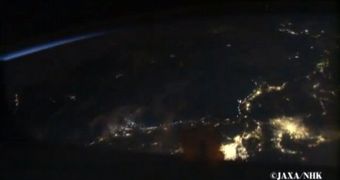Astronauts aboard the International Space Station are happy to announce that the newly-installed Super Sensitive High Definition TV (SS-HDTV) cameras installed on the facility are now observing Earth in an unprecedented level of detail.
Looking at the planet from afar is one of the main reasons why astronauts chose to become astronauts, and why scientists are so fascinated with space studies. This vantage point shows the world from a perspective few people get to see and the photographs are usually breathtaking.
However, one of the main issues with space observations is the poor quality of photographs or videos relayed from orbit. The SS-HDTV system was installed on the international lab precisely to improve on the quality of orbital data that are sent back to Mission Control.
Astronauts from most expeditions that visited the ISS over the past few years complained about the fact that some of the most beautiful vistas on the planet could not be captured on tape due to poor video equipment or inappropriate lighting conditions during the night.
But the SS-HDTV cameras changed all that, by providing a significant window of observation into places on our planet that have thus far remained obscured to the eye in the sky. The announcement was made by senior engineer Keiji Murakami.
The expert, who is based at the Japan Aerospace Exploration Agency (JAXA), says that astronauts will now be able to observe our planet for prolonger periods of time. The ISS experiences 16 sunrises and sunsets per day, due to the speed at which it's traveling in orbit.
“Half of the Earth view from [the ISS] is a night view. And the day view and night view are very different,” Murakami explains. “By October, JAXA astronaut Satoshi Furukawa had logged more than 30 hours of video using the camera,” NASA says in a press release.
“While the Earth observations are an amazing sight, they are also an important part of the research goals for the space station. From images taken by crew members aboard station, scientists can research natural phenomena and man-made changes to the planet,” the statement adds.
The first images collected by SS-HDTV cameras were shown to the public on September 18, by the Japan Broadcasting Corp. (NHK), the Asian nation's equivalent to the US Public Broadcasting System (PBS).
“Using this super sensitive camera, we have observed the lightning, sprite, aurora, meteor, noctilucent cloud and airglow. The phenomena of the sprite has not yet been studied in high definition until now. The color video of the sprite was taken for the first time from space using this camera,” Murakami concludes.

 14 DAY TRIAL //
14 DAY TRIAL //